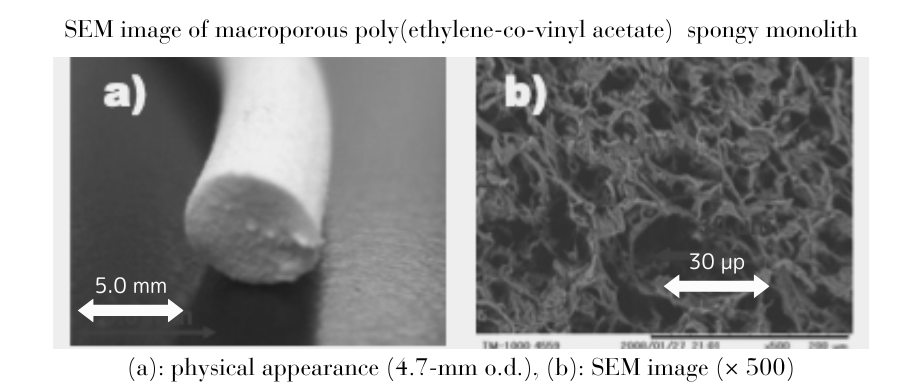Physical Features
- High-throughput separations with large through-pores allowing the high flow rate at lower pressure
- Superior separation of large biomolecules (such as proteins, cells) to separation media packed with particle
- Directly bindable with affinity ligands at high densities because of epoxides on the surface of SPM (SPM-Bio)
- Extremely low irreversible adsorption of biological analytes after immobilization of biomolecules (SPM-Bio)
- Available to place into specific devices and existing parts with high formability
An appearance of the spongy monolith and pore structures


Chemical Features
- Possible various modifications through hydroxy or epoxide groups on the SPM surface
- Retaining functions of biomolecules (enzyme, antibody, lectin etc.) immobilized on the SPM surface (SPM-Bio)
- High resistance against an alkaline condition
- Lighter than present separation media and easy to scale up
- Disposable by incineration
Chemical structures of the spongy monolith
Monolithic separation media with large through-pore can be fabricated using PEGM poly(ethylene-co-glycidyl methacrylate) including reactive epoxide group, EVA poly(ethylene-co-vinyl acetate) having acetic acid vinyl structures and many other thermoplastic polymers as materials.
